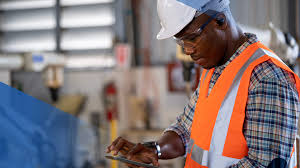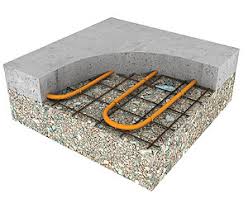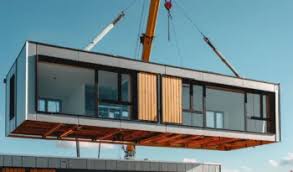Construction
The construction industry is a vital sector that shapes our built environment. Some key aspects include:
Trends
1. Sustainable Building: Focus on
energy-efficient designs, green materials, and reduced
waste.
2. Technology Integration: Use of
Building Information Modeling (BIM), drones, and construction
management software.
3. Modular Construction:
Prefabricated modules assembled on-site to reduce construction
time.
Challenges
1. Labor Shortages: Skilled labor
shortages and workforce aging.
2. Safety Concerns: Ensuring
worker safety and preventing accidents.
3. Environmental Impact:
Minimizing waste, reducing emissions, and promoting
sustainability.

Opportunities
1. Innovative Materials:
Developing new materials like self-healing concrete and
recycled plastics.
2. Smart Buildings: Integrating
technology for energy efficiency, security, and occupant
comfort.
3. Infrastructure Development:
Investing in roads, bridges, and public transportation.
The construction industry is evolving with technological advancements and sustainability focus. Some key areas include:
Technological
Advancements
1. Building Information Modeling
(BIM): Enhancing collaboration, reducing errors, and improving
project management.
2. Construction Robotics:
Automating tasks like bricklaying, 3D printing, and
demolition.
3. Virtual Reality (VR) and
Augmented Reality (AR): Improving design visualization,
training, and site inspections.

Sustainability Focus
1. Green Building: Designing
buildings that minimize environmental impact and reduce energy
consumption.
2. Sustainable Materials: Using
recycled, locally sourced, and environmentally friendly
materials.
3. Energy-Efficient Systems:
Implementing systems like solar panels, geothermal heating, and
energy-efficient HVAC.
Industry Challenges
1. Labor Shortages: Addressing
skilled labor shortages and workforce aging.
2. Safety Concerns: Ensuring
worker safety and preventing accidents.
3. Project Management: Managing
complex projects, timelines, and budgets.

Future Directions
1. Modular Construction:
Prefabricating building modules in factories to reduce on-site
construction time.
2. Smart Buildings: Integrating
technology for energy efficiency, security, and occupant
comfort.
3. Net-Zero Energy Buildings:
Designing buildings that produce as much energy as they
consume.
Some exciting developments in the construction industry include:
Innovative Materials
1. Self-healing concrete:
Concrete that can repair cracks automatically.
2. Recycled materials: Using
recycled materials in construction to reduce
waste.
3. Sustainable wood: Using
sustainably sourced wood and alternative materials.

Construction
Technology
1. 3D printing: Printing
buildings and structures using 3D printing
technology.
2. Robotics and automation:
Automating construction tasks like bricklaying and
demolition.
3. Drones: Using drones for site
inspections, monitoring, and surveying.
Sustainable
Construction
1. Net-zero energy buildings:
Buildings that produce as much energy as they
consume.
2. Green roofs: Roofs with
vegetation to reduce energy consumption and improve air
quality.
3. Energy-efficient systems:
Implementing systems like solar panels and energy-efficient
HVAC.
Future of
Construction
1. Modular construction:
Prefabricating building modules in factories to reduce on-site
construction time.
2. Smart buildings: Integrating
technology for energy efficiency, security, and occupant
comfort.
3. Resilient construction:
Designing buildings that can withstand natural disasters and
climate change.
